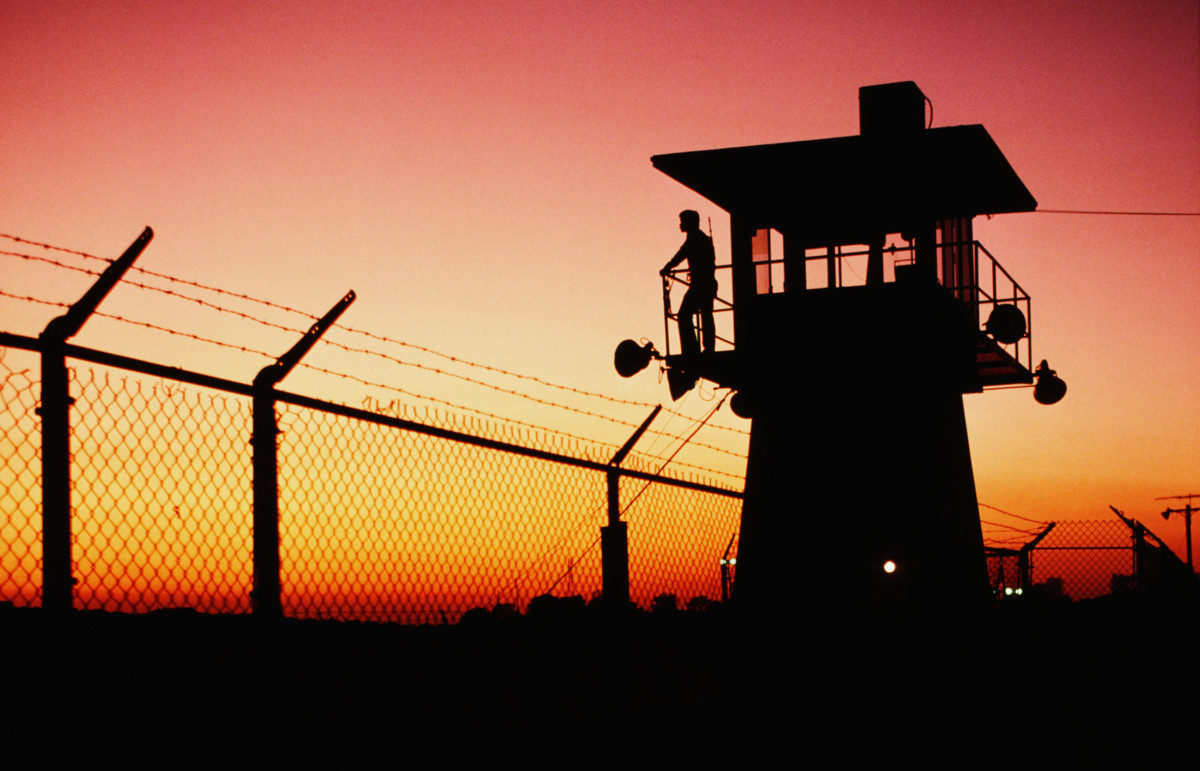Support justice-driven, accurate and transparent news — make a quick donation to Truthout today!
Driving the roads of any small coal town settled within the central Appalachian Mountains, it is easy to see the beauty of the landscape. However, this beauty is concealed by lasting embodiments of capitalist ideals, including rusting coal tipples or large swaths of mountains destroyed by mountain top removal mining, built on the bodies of the region’s inhabitants who have been continually abandoned and exploited. Well documented is the level of destruction and exploitation residents continue to face following over a century of reliance on the coal industry.
Less evident is the alarming shift in the idea of “extraction” taking place. As mining operations in the area continue to fade, prisons now fill the void. This expansion furthers a level of labor exploitation documented since the earliest days of colonial practices in the United States. The mining industry capitalized on the external ownership of the region’s resources, forcing the population into a state of constant economic precariousness. Maintaining a high level of economic control dissuaded potential non-coal-related wealth from entering the area, demanding Appalachians rely on the industry as a singular economic savior. This economic dominance perpetuates the institutionalized generational poverty in the region, and supports the construction of demonstrative labels for the purpose of maintaining such control.
To some outsiders, this population falsely represents a region of “trash” used for the progress of others. Research documents the existing intra-racial tension housed in the white population of Central Appalachia. The use of the term “trash” in tandem with the power and privilege associated with “whiteness” creates a historical anomaly for the purpose of cultural separation. The connation of such language forces these individuals to the edges of the construction of “whiteness” and labels them as a lesser working class. Such designation produces a cultural environment in which this population is seen as “deserving” of exploitation, similar to the historical constructions of Black people in Appalachia. This damaging rhetoric contributed to the level of cultural and economic exploitation of the region’s labor via the lasting grip of the mining industries.
Many in Central Appalachia suffer economically and socially, with just 59 percent of employable adults in the labor force and 24.4 percent of people in poverty. This leaves zero doubt that the region’s inhabitants need a viable means of survival. This vulnerability allows industries to exploit this population through toxic institutions extracting cheap labor to guard their investments.
Prisons and jails now represent the new “economic savior” to a region initially controlled by the labor-intensive mining industry. These institutions rely on the same rhetoric that allowed the mining industry to become the economic savior historically. On March 27, 2018, the Bureau of Prisons approved plans to build a new, nearly $500 million prison facility on a former coal mine in Letcher County, Kentucky. This will be at least the 30th state or federal penitentiary built in Central Appalachia since 1989. US Representative for the region, Hal Rogers, has said, “It’s going to create a lot of good jobs in the heart of Appalachia, the heart of coal country.” These decisions have led to the growth of Kentucky’s incarcerated population while the overall US incarceration rate continues on a downward trend. Kentucky had the third-highest overall growth in incarceration rates in the nation from 2016 to 2017.
The hyper-exploitation by these institutions, especially state facilities, is significant. Correctional officers working in the Central Appalachian region (West Virginia, Western Virginia, Eastern Kentucky and Eastern Tennessee) receive salaries making it impossible for them to support the “traditional” family. Specifically, state websites for West Virginia, Virginia, Kentucky and Tennessee show correctional officers’ starting gross pay ranging between $22,584 and $26,028. These gross salaries fall below the national poverty line for individuals supporting a family of four.
However, like other extractive industries in the region, the physical harm these jobs cause to workers exacerbates the impact of low salaries. Research shows that correctional officers face a number of stress and job-specific health and family concerns such as high rates of PTSD, suicide, stress-related illnesses and domestic violence. Additionally, Environmental Protection Agency databases show that carceral institutions are subjects of 1,149 informal and 78 formal sanctions due to violations of the Safe Drinking Water Act over the past five years.
The environmental and health concerns of working in the prison have similarities with working the coal mine. Therefore, the prison has become the new toxic industry that exploits the population often falsely stereotyped and confined within the label as “white trash.” Prisons and jails continue to capitalize on low-wage exploitation. This process and the continued allowance of such exploitations stems from a history of very little concern for this population outside the region.
It is clear then, in the fight to lessen and abolish carceral institutions, we must understand how these extractive industries also exploit the communities in addition to those incarcerated. The oppression of bodies, mostly those of color, and the environmental destruction these prisons and jails represent are only a piece of the damage they represent to poor Central Appalachian communities. Using historical rhetoric of the “trash” label allows industries to continue the extraction of cheap labor from an already precariously positioned population. It is important for society to understand why and how these institutions are able to take hold in these poor rural regions and what exactly that demonstrates about our social consciousness as a whole. Meanwhile, the Central Appalachian people deserve economic opportunities beyond these extractive, exploitative industries that perpetuate harms and traumas across several generations.
Press freedom is under attack
As Trump cracks down on political speech, independent media is increasingly necessary.
Truthout produces reporting you won’t see in the mainstream: journalism from the frontlines of global conflict, interviews with grassroots movement leaders, high-quality legal analysis and more.
Our work is possible thanks to reader support. Help Truthout catalyze change and social justice — make a tax-deductible monthly or one-time donation today.
